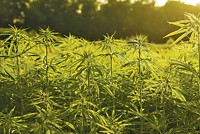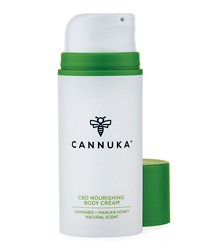Advertisement
Grab your lab coat. Let's get started
Welcome!
Welcome!
Create an account below to get 6 C&EN articles per month, receive newsletters and more - all free.
It seems this is your first time logging in online. Please enter the following information to continue.
As an ACS member you automatically get access to this site. All we need is few more details to create your reading experience.
Not you? Sign in with a different account.
Not you? Sign in with a different account.
ERROR 1
ERROR 1
ERROR 2
ERROR 2
ERROR 2
ERROR 2
ERROR 2
Password and Confirm password must match.
If you have an ACS member number, please enter it here so we can link this account to your membership. (optional)
ERROR 2
ACS values your privacy. By submitting your information, you are gaining access to C&EN and subscribing to our weekly newsletter. We use the information you provide to make your reading experience better, and we will never sell your data to third party members.
Business
Hemp, No Longer Illegal, Is Poised For A Comeback In The U.S.
Demand from natural food and body care markets motivates farmers
by Melody M. Bomgardner
November 23, 2015
| A version of this story appeared in
Volume 93, Issue 46

The last time the U.S. enjoyed a hemp revival was during World War II, when the country could no longer import cheap rope fiber from Asia. The effort, called Hemp for Victory, was promoted by the government even though plantings of hemp, a relative of marijuana, were tightly restricted.
More than a half-century later, there is a new push to reestablish the ancient crop. It is being led by a small group of enthusiastic activists and businesspeople who tout the health value of hemp-sourced fatty acids and proteins.
Hemp products, they emphasize, are nonpsychoactive. But, ironically, it’s changing attitudes about marijuana for medicinal and recreational use that have opened the door for industrial hemp to take root again.
Hemp insiders caution that the U.S. is far from having a viable industry again. The crop has been almost entirely illegal since 1937. Though hemp does not contain enough psychoactive tetrahydrocannabinol (THC) to have value as an illegal drug crop, antidrug officials claim hemp and marijuana are hard to tell apart visually, making enforcement of drug laws difficult.
Prospective hemp farmers can thank Kentucky for a change in the long-maligned plant’s legal status. Sens. Mitch McConnell (R) and Rand Paul (R) pushed for language in the 2014 Farm Bill that allows states to oversee industrial hemp if their agriculture departments set up programs to cultivate it for research purposes. More than a decade ago, in anticipation of a federal change, Kentucky passed a law setting up such a pilot program.
“For Kentucky, the second it was a bona fide federal program it was like flipping on the lights,” says Andy Graves, a seventh-generation farmer and chief executive officer of Atalo Holdings, an umbrella company with three hemp businesses.
This year, Graves contracted with 32 growers who grew hemp on a total of 300 acres—and grew 27 acres himself. His company plans to market hemp seeds—called grain—as well as hemp oil and cannabidiol, a cannabinoid with anti-inflammatory properties.
Graves says his family grew hemp through the 1930s before switching to tobacco. But Kentucky’s share of the global tobacco market has been dwindling for decades.
“Now, we’re a very hemp-friendly state as a function of our families’ history and knowing it is not ‘drugs.’ It’s a wonderful plant with multiple uses for better health for humans,” Graves says. “Growers signing up for hemp are not signing up again to grow tobacco.”
Twenty states are now working to launch hemp programs. To maximize grain yield, today’s hemp farmers will require different varieties than the tall plants their grandparents grew for fiber. Finding and testing those varieties, and evaluating where and how best to grow them, are the goals of most state hemp programs.
Hemp for Victory
This U.S. Department of Agriculture film from 1942 encouraged farmers to plant hemp for the war effort. Credit: USDA
Some varieties will come from Canada, where it has been legal to grow hemp since 1998. Indeed, Canadian farmers grow the hemp that forms products currently purchased by U.S. consumers and food makers.
From 2010 to 2014, Canadian exports of hemp grain to the U.S. increased 30% per year on average, according to the Canadian Hemp Trade Alliance. Exports jumped even more in the first half of this year, reaching almost 10 million kg—worth about $35 million. The retail value of all hemp products sold in the U.S. is approximately $620 million per year, according to the Hemp Industries Association.
One retail brand is Manitoba Harvest. Its most popular product is hemp hearts, the hull-free portion of the grain, which has a sweet, nutty flavor and is used in similar ways as nuts. “We have a large vegetarian and vegan following, since the hearts contain all the essential amino acids,” says Kelly Saunderson, Manitoba Harvest’s manager of corporate affairs.
The market is still small, Saunderson acknowledges. About 3% of households in Canada and 1% in the U.S. put hemp on their shopping lists. “But it has just begun expanding to the mass market, as plant-based nutrition is expanding in general,” she says. Price is one factor limiting adoption; hemp hearts cost roughly $24 per kg.
Analytical chemist Jace Callaway became intrigued by the nutritional qualities of hemp grain about 20 years ago. Callaway, who is from Arkansas, lives in Finland, where his wife was born. When Finland joined the European Union in 1995, EU governance allowed hemp cultivation. That’s when Callaway started a project to identify a variety of hemp that would grow in Finland.
As part of that effort, Callaway, at the time a professor of pharmaceutical chemistry at the University of Kuopio, analyzed the fatty acid profile of hemp seeds from Russia. He found they have an oil content of 30%, of which 84% is heart-healthy polyunsaturated fatty acids.
By that measure, hemp seed oil has a slight edge over flax and sunflower seed oils. Today, Callaway runs a business that sells farmers a popular hemp seed variety called Finola.
Hemp seed oil is rich in two essential fatty acids, linoleic acid, an omega-6 fatty acid, and α-linolenic acid, an omega-3. They are called essential because the body can’t manufacture them from other nutrients. What’s more, the oil’s ratio of omega-6 to omega-3, around 2 to 1, is considered to be optimal for human health.
“Omega-3 and -6 compete for the same metabolic enzyme, so it is important to have the correct balance for enzyme kinetics,” Callaway says.

The fatty acids are the raw material for metabolites—such as γ-linolenic acid—that have important anti-inflammatory effects. Hemp seed oil is unusual in that it also directly contains γ-linolenic acid and another omega-3 metabolite called stearidonic acid.
Hemp seeds contain high quantities of vitamin E, phosphorus, potassium, magnesium, iron, and zinc. Together with the fatty acids, these nutrients show promise for improving immune function and lowering LDL—or “bad”—cholesterol levels.
The seed also is 25% protein. Callaway’s data show that hemp, like soy, contains nutritionally significant amounts of all nine essential amino acids.
The amino acids come in two particularly easy-to-digest types of protein called edestin and albumin. Unlike soy protein, hemp protein is entirely digestible, even when the seed is eaten raw, Callaway notes. People willing to crunch down on hemp seeds that still have their hulls also get a high dose of fiber and polyphenolic compounds.
Hemp seeds have a nutty flavor and texture with a subtle fresh vegetable aftertaste that comes from the presence of chlorophyll. The chlorophyll lends a bright green hue to the oil.
“I use hemp protein in my daily smoothies, and I eat hemp seeds as a snack and sometimes add them to my salads,” says Dorea Reeser, who is both a vegan and a chemist.
Being a chemist “has helped me understand the nutritional profile of hemp and why I personally think it’s fabulous,” Reeser enthuses. “It has an excellent amino acid profile, which is important to me not just because I am a vegan but because I am very athletic and tend to put my body under a lot of physical stress.”
It’s not clear what health benefit, if any, results from applying hemp oil to skin and hair, but its emollient qualities have won it a place in many personal care products—particularly those that rely on plant-based ingredients.
Brands such as the Body Shop and Nature’s Gate now advertise hemp on many of their labels. California-based Dr. Bronner’s is a large buyer of imported hemp oil, which the firm says makes soap less drying and acts as a moisturizer in lotions and balms. The firm’s CEO, David Bronner, has been a strong advocate for hemp legalization in the U.S.

As legal restrictions and red tape loosen, hemp proponents expect the U.S. industry to grow and benefit from economies of scale. That would go a long way to mitigate hemp products’ high cost, which is their main drawback.
“Production in Canada now is strong enough to lubricate the markets for it,” says Anndrea Hermann, an agronomist and hemp consultant. “Now we have to do some legwork. We have to fight for it.” Each year brings a notable increase in both yield per acre and the number of hemp acres planted, she adds.
In Canada, growers earn more from hemp than they do from canola or wheat, Hermann says. She adds that the crop is heavily regulated, and all products must be tested to ensure they contain less than 0.3% THC.
Eventually, farmers may choose to install machinery to recover hemp fiber to make a market for all the plant’s parts; in that way hemp could live up to its nickname, “the green buffalo.”
For his part, Graves, the Kentucky farmer, would like to see more hemp farmers obtain organic certification because many health-focused consumers look for the organic label.
This spring, Graves expects to contract with Kentucky hemp growers for 3,000 acres. He says they learned a great deal from their 2015 plantings: Some farmers had a bumper crop; others grew only weeds. “All of this has a learning curve attached to it,” he says.






Join the conversation
Contact the reporter
Submit a Letter to the Editor for publication
Engage with us on Twitter